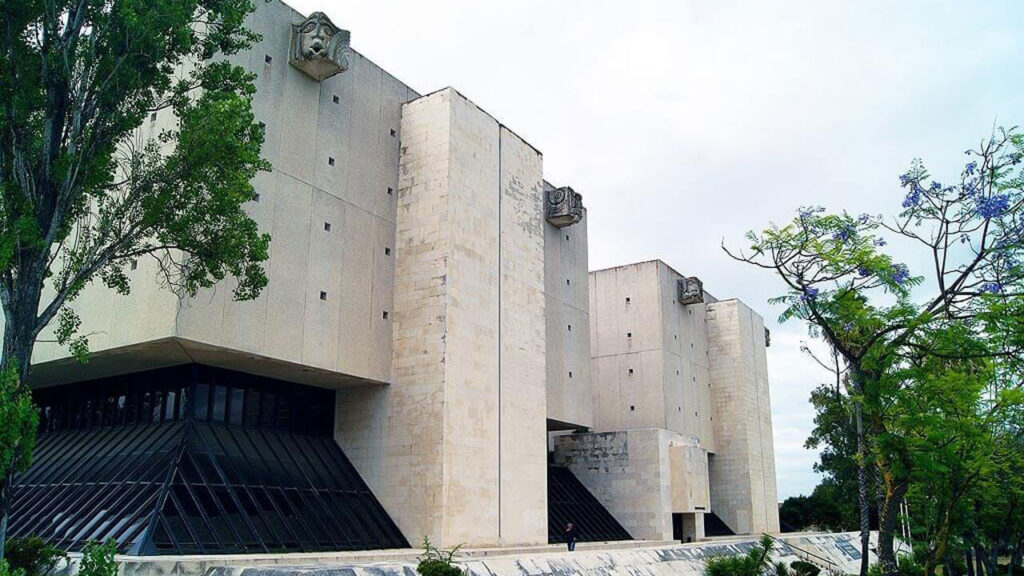The National Archive of the Tombo Tower has an important and valuable collection. Here are some of the most precious documents of Portugal and Humanity.
In this archive are preserved documents from the 9th century all the way to the current day. It is this institution’s responsibility to protect, preserve, restore, value and promote them. Due to its character, this is an archive that doesn’t stop growing.
It is thus important to know a bit about the story of this archive that, together with the Portuguese Court of Audits, is one of the oldest institutions of Portugal, being approximately 600 years old.
The Meaning of Tombo
Tombo derives from the greek tômos that means part, piece or portion. Hence the word tomo to refer to volume. The term tombo was used to name papyri, parchments and later, the papers used for important documents of the kingdom.
The Books of Tombo, where the goods of the reign were registered, were always carried by the itinerant courts, but with time there was a need to keep and preserve them in a safe place.
The archive of the Book of Tombo was thus installed in a tower of São Jorge Castle in Lisbon. The first written evidence of this Tombo Tower dates back to 1378, the reign of King Fernando.
Get to know Lisbon’s historic neighbourhoods in a guided tour and discover unmissable places of this magnificent city.
The Tombo Tower
Many years of history equals to many vicissitudes too.
Until the 18th century were kept in the Tombo Tower several types of documents related to the monarch and its subjects; the administration of the reign and of the conquered territories; and even treaties or correspondence resulting from the external relations with others kingdoms.
Being the Central Archive of Portuguese State, it had a chief guard who was also the Chief Chronicler of the Kingdom. The chroniclers Fernão Lopes and Damião de Góis became quite notable.
The devastating earthquake of 1755 caused the collapse of the Tombo Tower, however the rubble that fell on the archives ended up protecting them from the fires following the earthquake.
The action of the chief guard of the archive at the time, Manuel da Maia, was crucial to the preservation of this patrimony.
Although part was lost, most of the documents were saved and stored in a wood shed built with this purpose. In 1757 this collection was temporarily transferred to the Saint Benedict of the Health Monastery, where the current Assembly of the Portuguese Republic is.
This temporary solution lasted around 233 years…
Throughout the centuries, not only did the natural phenomenons have a negative impact, but also human actions. These are the cases of diversions of documentation during the period of the Philippine Dynasty, and later on the transference of the court to Brazil or the armed conflicts, such as the Peninsular War and the Portuguese Civil War.


The Collection of the National Archive of the Tombo Tower
The Collection of the National Archive of the Tombo Tower includes documents from the 9th century all the way to the 21st century, more than a thousand years of documentary history.
We can say that in this archive are kept some of the most precious documents of not only the history of Portugal, but also of Humanity. Some of them are even featured in UNESCO’s Memory of the World Programme.
These are the cases of the bull Manifestis Probatum, the birth certificate of Portugal; the Letter of Pêro Vaz de Caminha; the collection of Chronological Body that is constituted by 83.000 documents related to the expansion and the relationship of Portugal with the World; and the Treaty of Tordesillas that was presented in a joint application with Spain.
We also highlight the magnificent illuminated codices, such as the Leitura Nova of the 16th century; more than 36.000 cases of the Court of Holy Office; the letter of abolition of the capital punishment in Portugal; the political police archive; and the Portugal’s Treaty of Accession to the EEC…
| Never miss another article | Subscribe here |
The New Building of the National Archive of the Tombo Tower
With this cultural patrimony, a true treasure of Portugal, it was imperative and urgent to create favorable conditions for its preservation, safety, study and promotion.
In the 1980s was finally put out to tender the construction from scratch of a building destined for the National Archive of the Tombo Tower in the area of Cidade Universitária (university campus).
The winning project, from the architect Arsénio Cordeiro (1940-2013) in collaboration with the architect António Barreiros Ferreira, conjugates in an exemplar way functionality and symbolism, aspects that we’ll further explore in our next article Tombo Tower, a Temple Guarded by Gargoyles.
The building was inaugurated in 1990, giving the Tombo Tower the shape and dignity deserved. Plus, Lisbon gained an interesting and significant architectural piece.
The National Archive of the Tombo Tower carries public spaces destined for the promotion and fruiton of its patrimony. Entry to the reading and exhibition rooms, as well as the auditorium is free for people over 18.
Don’t miss the striking temporary exhibitions with free entry and the guided tours organized by the National Archive!
The project getLISBON has been very rewarding and we want to continue revealing the singularities of fascinating Lisbon.
Help us keep this project alive!
By using these links to make your reservations you’ll be supporting us. With no extra costs!
• Looking for a different experience? We can create a customised itinerary based on your interests. Contact us!
• Or if you prefer tours and other activities in various destinations, take a look at GetYourGuide.
• Save time and money with a flexible Lisbon Card!




